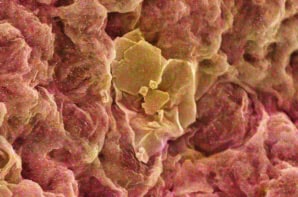This webinar was held on 1 July 2021. Available to watch now, it explores the Qnami ProteusQ: the first patented and complete quantum microscope system
Want to learn more on this subject?
 In recent years, the need for novel materials to boost storage and computation capabilities to keep up with the ongoing quantum revolution has increased tremendously. Nanoscale magnetism plays a crucial role in the identification of ideal candidate materials for such a challenge. Standard magnetic imaging techniques, however, can not reveal magnetic properties at the nanoscale without invasively perturbing the materials’ magnetic configuration.
In recent years, the need for novel materials to boost storage and computation capabilities to keep up with the ongoing quantum revolution has increased tremendously. Nanoscale magnetism plays a crucial role in the identification of ideal candidate materials for such a challenge. Standard magnetic imaging techniques, however, can not reveal magnetic properties at the nanoscale without invasively perturbing the materials’ magnetic configuration.
Here enters Qnami ProteusQ: the first patented and complete quantum microscope system. It is the first scanning NV (nitrogen-vacancy) magnetometer for the analysis of magnetic materials at the atomic scale. Its proprietary quantum technology provides high-precision images that allow scientists and engineers to see directly the most subtle properties of their samples and the effect of microscopic changes in their design or fabrication processes.
In this talk, we will show how quantum sensing enables us to measure magnetic fields that have never been measurable before. We will provide an overview of the different magnetic imaging modalities of ProteusQ and put this in context of cutting-edge materials science research.
Want to learn more on this subject?
 Alexander Stark is a co-founder and the CIO of Qnami. He received his PhD from the Technical University of Denmark where he developed measurement protocols for quantum sensing applications. Alexander has extensive know-how at the interface between hardware, software and quantum technologies, and is responsible for the development of Qnami’s flagship, the Qnami ProteusQ. He is also co-founder of Qudi, an open-source framework for quantum engineers that now constitutes the backbone of LabQ, the software operating Qnami’s Quantum Microscope.
Alexander Stark is a co-founder and the CIO of Qnami. He received his PhD from the Technical University of Denmark where he developed measurement protocols for quantum sensing applications. Alexander has extensive know-how at the interface between hardware, software and quantum technologies, and is responsible for the development of Qnami’s flagship, the Qnami ProteusQ. He is also co-founder of Qudi, an open-source framework for quantum engineers that now constitutes the backbone of LabQ, the software operating Qnami’s Quantum Microscope.
 Peter Rickhaus is the application scientist of Qnami. He has a broad knowledge in nanoscience ranging from biology, chemistry to physics. Within his PhD at Basel University and his Postdoc at the ETH Zurich he acquired a deep understanding of quantum physics and also extended his capabilities towards numerous fabrication and processing techniques. He contributed to more than 30 research publications and hosts a rich hands-on knowledge for investigative and analytical techniques.
Peter Rickhaus is the application scientist of Qnami. He has a broad knowledge in nanoscience ranging from biology, chemistry to physics. Within his PhD at Basel University and his Postdoc at the ETH Zurich he acquired a deep understanding of quantum physics and also extended his capabilities towards numerous fabrication and processing techniques. He contributed to more than 30 research publications and hosts a rich hands-on knowledge for investigative and analytical techniques.




